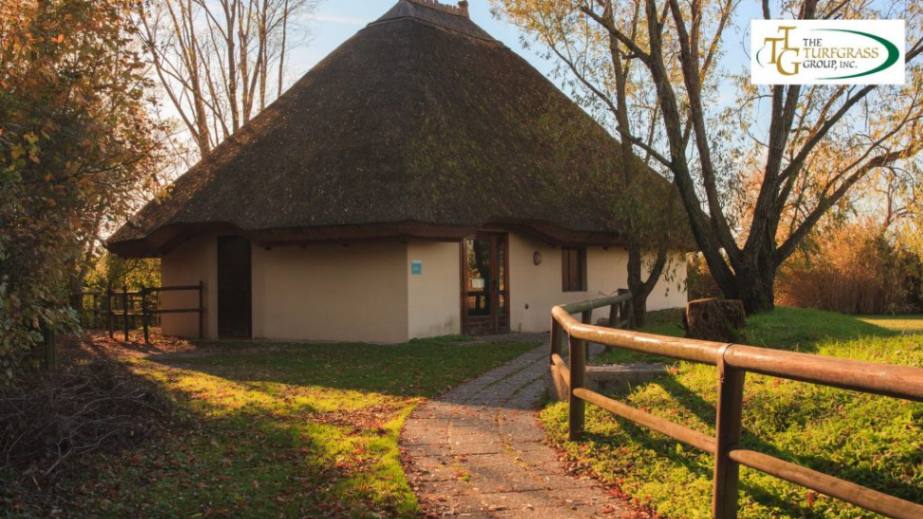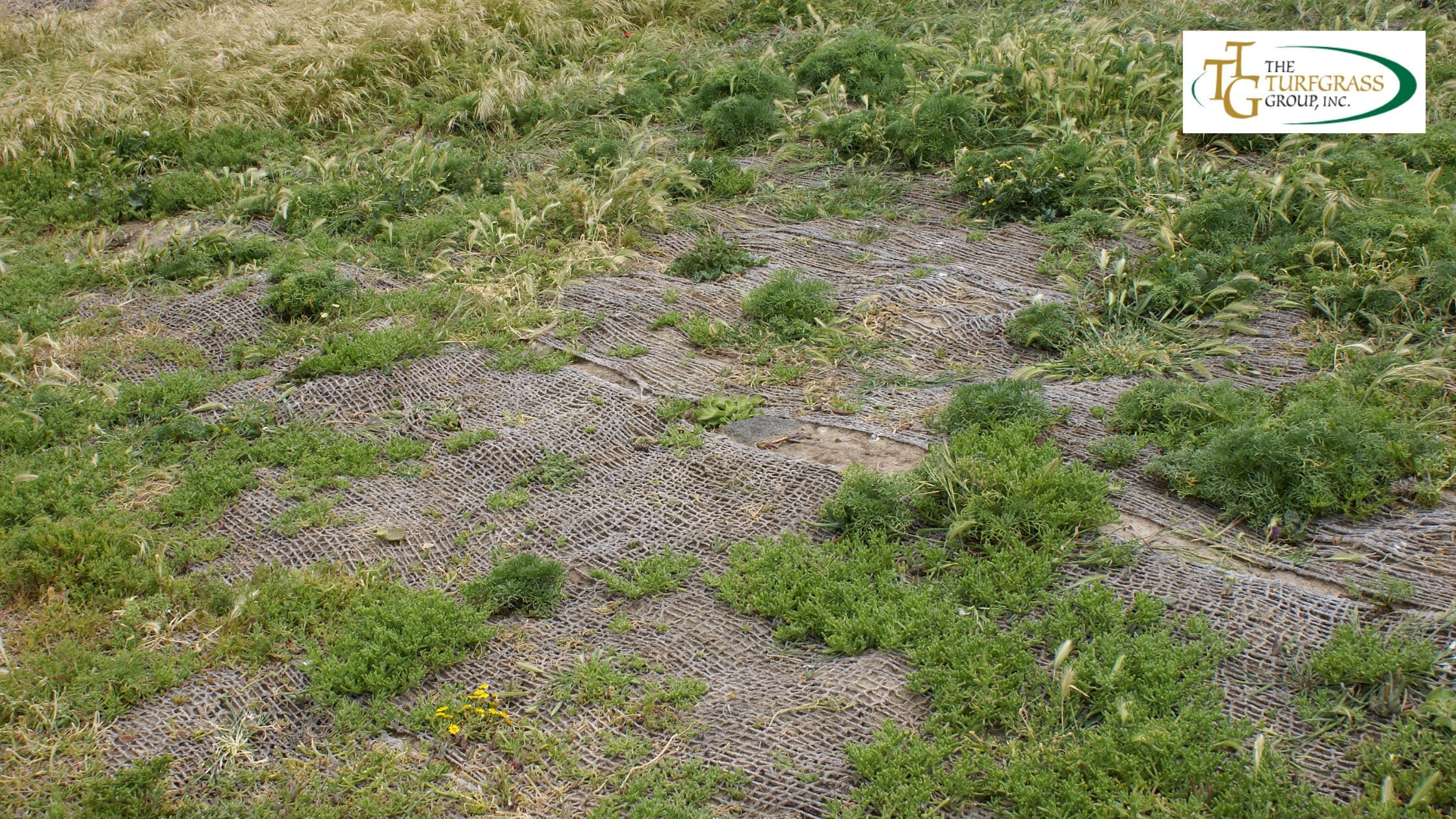
Zoysiagrass is a popular choice for homeowners and landscapers due to its durability, aesthetic appeal, and low maintenance requirements.
Originating from East Asia, Zoysiagrass has become a favorite in regions with warm climates thanks to its ability to withstand heat, drought, and heavy foot traffic.
However, like any turfgrass, Zoysia grass has its challenges.
One such challenge is the development of thatch, a layer of dead and living organic material that accumulates between the soil surface and the actively growing green vegetation.
Thatch in Zoysiagrass can be beneficial or detrimental, depending on various factors. Understanding the pros and cons of thatch is essential for maintaining a healthy lawn.
This article delves into the nature of thatch, its benefits and drawbacks, and how to manage it effectively.
Understanding Thatch: What is It?
Thatch is a natural occurrence in many types of grass, including Zoysiagrass.
It comprises a mix of dead grass stems, roots, leaves, and living organic matter that has yet to decompose fully hasn’t.
This layer forms just above the soil surface, creating a spongy mat beneath the green grass blades.
In Zoysiagrass, thatch develops because of the slow decomposition rate of the grass’s rigid, fibrous plant material.
The grass’s dense growth habit and the accumulation of organic matter contribute to the build-up of thatch over time.
While a thin layer of thatch (about half an inch or less) can be beneficial, excessive thatch can lead to various lawn problems.
The Pros of Thatch in Zoysiagrass
Natural Insulation
One of thatch’s primary benefits is its insulating properties.
A thin layer of thatch acts as a natural barrier, protecting the soil and grass from extreme temperature fluctuations.
In hot climates, this insulation helps to retain soil moisture by reducing evaporation, ensuring that the grass remains hydrated during dry spells.
Similarly, during colder months, thatch provides a protective layer that shields the roots from frost damage.
Improved Resilience to Foot Traffic
Zoysiagrass is already known for its durability and ability to withstand heavy foot traffic.
The presence of a moderate thatch layer can enhance this resilience by providing a cushioning effect.
The spongy nature of thatch absorbs the impact of footsteps, reducing soil compaction and preventing damage to the grassroots.
This makes Zoysia Grass with a healthy thatch layer ideal for lawns, sports fields, and recreational areas.
Enhanced Disease Resistance
A moderate amount of thatch can also contribute to the grass’s natural defense mechanisms.
Thatch can act as a barrier that limits the spread of certain soil-borne diseases.
By keeping the grass blades elevated, thatch reduces the likelihood of direct contact between the grass and disease-causing organisms in the soil.
This separation can help prevent the spread of fungal infections and other lawn diseases.
Erosion Control

Thatch stabilizes the soil surface by binding soil particles together with organic material.
This binding action is especially beneficial on sloped terrains, where erosion can be a significant concern.
The thatch layer reduces water runoff, allowing more water to infiltrate the soil and minimizing the loss of topsoil.
This contributes to a healthier and more sustainable lawn environment.
Weed Suppression
A moderate thatch layer can suppress weed growth by blocking sunlight from reaching weed seeds in the soil.
This light-blocking effect makes it more difficult for weeds to germinate and establish themselves in the lawn.
As a result, Zoysiagrass, with a healthy thatch layer, often experiences fewer weed infestations, reducing the need for chemical herbicides.
The Cons of Thatch in Zoysiagrass
Impeded Water and Nutrient Penetration
While a thin layer of thatch can be beneficial, excessive thatch can become problematic.
A thick thatch layer acts as a barrier that prevents water, air, and nutrients from reaching the soil and grass roots.
This can lead to shallow root development, making the grass more susceptible to drought stress and nutrient deficiencies.
Over time, the grass may become weak and discolored due to the lack of essential resources.
Increased Pest and Disease Risk
Although moderate thatch can provide some disease resistance, excessive thatch can create an environment conducive to pests and diseases.
A thick thatch layer can trap moisture, creating a humid microenvironment that encourages the growth of fungal pathogens.
Additionally, thatch can harbor insects such as chinch bugs and sod webworms, which can cause significant damage to Zoysia Grass.
These pests thrive in the thatch layer, where they find shelter and a food source, leading to increased infestations.
Difficulty in Lawn Maintenance
A thick layer of thatch can complicate routine lawn maintenance tasks such as mowing and fertilizing.
Mowing over a thick thatch layer can result in uneven cuts, as the mower wheels may sink into the spongy surface.
This can leave the grass looking rugged and unkempt.
Furthermore, fertilizing a lawn with excessive thatch can be less effective, as the fertilizer may get trapped in the thatch layer rather than reaching the soil where it is needed.
Increased Risk of Scalping
Scalping occurs when too much of the grass blade is removed during mowing, exposing the brown thatch or soil beneath.
This can happen more frequently in lawns with thick thatch, as the mower may sink into the thatch layer, cutting the grass too short.
Scalping not only affects the lawn’s appearance but also stresses the grass, making it more susceptible to diseases and environmental stressors.
Compromised Root System
Excessive thatch can lead to the development of shallow roots, as the grassroots may grow into the thatch layer rather than the soil.
This can compromise the grass’s overall health, making it less resilient to drought and other stressors.
Shallow-rooted grass is more prone to wilting and may require more frequent watering to maintain its green color and vigor.
Managing Thatch in Zoysiagrass
Effective thatch management is crucial for maintaining a healthy Zoysia Grass lawn.
Here are some strategies to keep that in check:
Regular Mowing
Proper mowing practices can help prevent excessive thatch build-up.
Avoid mowing the grass too short, as this can stress the grass and contribute to thatch accumulation.
Instead, mow regularly and at the recommended height for Zoysia Grass (usually 1 to 2 inches).
Aeration
Core aeration is an effective method for reducing thatch and improving soil aeration.
By removing small plugs of soil, aeration helps to break up the thatch layer and encourages the decomposition of organic matter.
Aeration also improves water and nutrient penetration, promoting more profound root growth.
Dethatching
Dethatching is a more aggressive approach to removing excess thatch.
This can be done using a dethatching rake or a power dethatcher, which pulls up and removes the thatch layer.
It’s essential to dethatch only when necessary, as excessive dethatching can damage the grass.
Early spring or late summer are ideal times for dethatching Zoysia Grass, as the grass is actively growing and can recover more quickly.
Proper Irrigation and Fertilization
Overwatering and over-fertilization can contribute to thatch build-up by promoting excessive grass growth and organic matter accumulation.
It’s important to water deeply and infrequently, allowing the soil to dry out slightly between watering.
Additionally, use slow-release fertilizers and follow recommended application rates to avoid excessive growth.
Topdressing
Applying a thin layer of compost or sand over the lawn can help break down thatch by introducing microorganisms that aid in decomposition.
Topdressing also helps to improve soil structure and encourages healthy root growth.
For best results, this practice should be done in conjunction with aeration.
Conclusion
Thatch in Zoysiagrass can be a double-edged sword.
While a moderate thatch layer offers benefits like insulation, enhanced resilience, and disease resistance, excessive thatch can lead to problems such as poor water and nutrient penetration, increased pest and disease risks, and maintenance difficulties.
Understanding the pros and cons of thatch is critical to maintaining a healthy, thriving Zoysia Grass lawn.
With proper management practices, you can strike the right balance, ensuring your lawn remains lush and beautiful throughout the year.
If you’re looking for expert advice or need help with your Zoysia Grass lawn, don’t hesitate to contact us.
Our team at The Turfgrass Group is here to assist you with all your turfgrass needs.
FAQs
What is thatch in Zoysiagrass?
Thatch is a layer of dead and living organic material that accumulates between the soil surface and the green grass blades. It consists of dead grass stems, roots, leaves, and other organic matter that hasn’t fully decomposed. In Zoysiagrass, thatch forms due to the slow decomposition of the grass’s rigid, fibrous plant material.
What are the benefits of thatch in Zoysiagrass?
Thatch in Zoysiagrass offers several benefits, including natural insulation, improved resilience to foot traffic, enhanced disease resistance, erosion control, and weed suppression. A moderate thatch layer can protect the grass roots from temperature fluctuations, reduce soil compaction, limit the spread of soil-borne diseases, stabilize the soil surface, and prevent weed growth.
How does that act as natural insulation?
A thin layer of thatch helps insulate the soil and grass roots by reducing evaporation in hot weather and providing a protective barrier against frost during colder months. This insulation helps maintain soil moisture and protects the grass from temperature extremes.
Can thatch improve the grass’s resilience to foot traffic?
Yes, a moderate layer of thatch provides a cushioning effect that absorbs the impact of footsteps, reducing soil compaction and preventing damage to the grassroots. This makes Zoysiagrass with a healthy thatch layer more durable in high-traffic areas like lawns, sports fields, and recreational spaces.
How does that contribute to disease resistance in Zoysiagrass?
Thatch can act as a barrier that reduces the spread of certain soil-borne diseases by keeping the grass blades elevated and limiting direct contact between the grass and disease-causing organisms in the soil. This separation can help prevent the spread of fungal infections and other lawn diseases.
What are the potential drawbacks of excessive thatch in Zoysiagrass?
Excessive thatch can impede water and nutrient penetration, increase the risk of pests and diseases, complicate lawn maintenance, increase the risk of scalping, and compromise the root system. A thick thatch layer can prevent essential resources from reaching the soil and grass roots, create a humid environment that promotes fungal growth, and lead to shallow root development.
How can that affect water and nutrient penetration?
A thick thatch layer acts as a barrier that prevents water, air, and nutrients from reaching the soil and grass roots. This can result in shallow root development, making the grass more susceptible to drought stress and nutrient deficiencies.